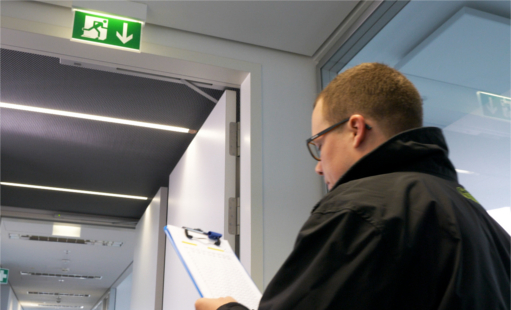Lightelligence from Osram understands space and opens up new dimensions in energy saving and networked sensors
- Osram cuts lighting energy costs by more than 90 percent with Lightelligence
- Lightelligence is the IoT platform for light management and beyond
- Lightelligence understands space, providing invaluable insights into its utilization and environmental conditions - Lightelligence features include the ability to integrate the management of lighting, air conditioning, alarms, emergency power supply, and other systems
Osram, the leading lighting and optical semiconductor specialist, will introduce a software platform at the Light + Building fair in Frankfurt that goes far beyond intelligent light management. “Using our new Lightelligence platform, we have been able to radically reduce the amount of energy used for lighting in an intelligent building,” says Stefan Kampmann, Chief Technology Officer of OSRAM Licht AG. “Users can save even more money if they combine a range of intelligent control systems in buildings with the Lightelligence platform.”
In a year-long trial, Osram’s Lightelligence platform reduced energy consumption by over 90 percent at the company’s site in Traunreut. The initial step was to switch the conventional lighting to LEDs, which reduced energy consumption by more than 60 percent. By employing intelligent light-on-demand control that uses movement detectors, this was reduced by a further 75 percent, giving a total reduction of over 90 percent in the site’s warehouse and logistics area.
“Through our technologies, we are further establishing ourselves as a company that understands space,” says Thorsten Müller, Head of Innovation at Osram. “Lights can be found throughout every building and are connected to the electricity supply. When combined with sensors, they provide the ideal means of collecting and analyzing key data about space utilization and operating conditions.” Osram is making good use of proven concepts from the platform economy. “Successful platform operators have created effective developer ecosystems,” Müller says. “We are applying this logic to Lightelligence – our platform users can reap the benefits of a fully developed infrastructure without having to build or maintain it themselves.”
One of the first customers to use Osram’s Lightelligence platform is Bamberg-based luminaire specialist RZB. The platform, an example of Internet of Things technology, allows RZB to automatically carry out remote function tests on emergency lighting systems. Regular testing of emergency lighting systems is a legal requirement in public and commercially used buildings. Until now, employees often had to walk through the buildings and check each emergency exit sign separately. But now, the checks can be carried out and documented remotely at the click of a button using sensors and Lightelligence, reducing the buildings’ running costs considerably.
A wide range of components and control systems can be integrated into the Lightelligence platform, as the system is open to products, applications, and interfaces from all manufacturers. This reaps synergies and reduces costs. For example, movement detectors installed to control lighting can also be used by alarm systems and in heating management. Air quality sensors can be leveraged by systems such as air conditioning, automated window control, and fire alarms. Brightness sensors that control blinds can also be used to dim interior lighting and can be accessed by fire alarm and intrusion alarm systems. Installation and running costs can be significantly reduced through multiple analysis of sensors across various control systems.
A broad variety of software can run on Osram’s Lightelligence platform, making new applications possible that go beyond lighting. Osram’s sensor-based logistics solutions, for example, can use a warehouse’s lighting infrastructure to record inventories, monitor temperature and humidity for perishable goods, or optimize the way in which warehouses are used. Motion detectors in office buildings can be used to manage meeting rooms more efficiently and arrange targeted cleaning. In retail stores, customers can be better addressed via localized digital services. Mobile assets, such as beds and medical equipment in hospitals, can be located immediately. Beyond buildings, smart city solutions, such as the identification and reporting of free parking spaces through intelligent street luminaires, become feasible.
Programmers of these intelligent applications can save a lot of development time thanks to the structured development environment and the large number of software modules available. Osram has chosen Microsoft Azure as cloud platform to provide hyper-scalable infrastructure for the Lightelligence platform.
For more information, visit http://www.lightelligence.io

ABOUT OSRAM
OSRAM, based in Munich, is a leading global high-tech company with a history dating back more than 110 years. Primarily focused on semiconductor-based technologies, our products are used in highly diverse applications ranging from virtual reality to autonomous driving and from smart phones to smart and connected lighting solutions in buildings and cities. OSRAM uses the endless possibilities of light to improve the quality of life for individuals and communities. OSRAM’s innovations enable people all over the world not only to see better, but also to communicate, travel, work and live better. OSRAM has approximately 26,400 employees worldwide as of end of fiscal 2017 (September 30) and generated revenue of more than €4.1 billion. The company is listed on the stock exchanges in Frankfurt and Munich (ISIN: DE000LED4000; WKN: LED400; trading symbol: OSR). Additional information can be found at www.osram.com.